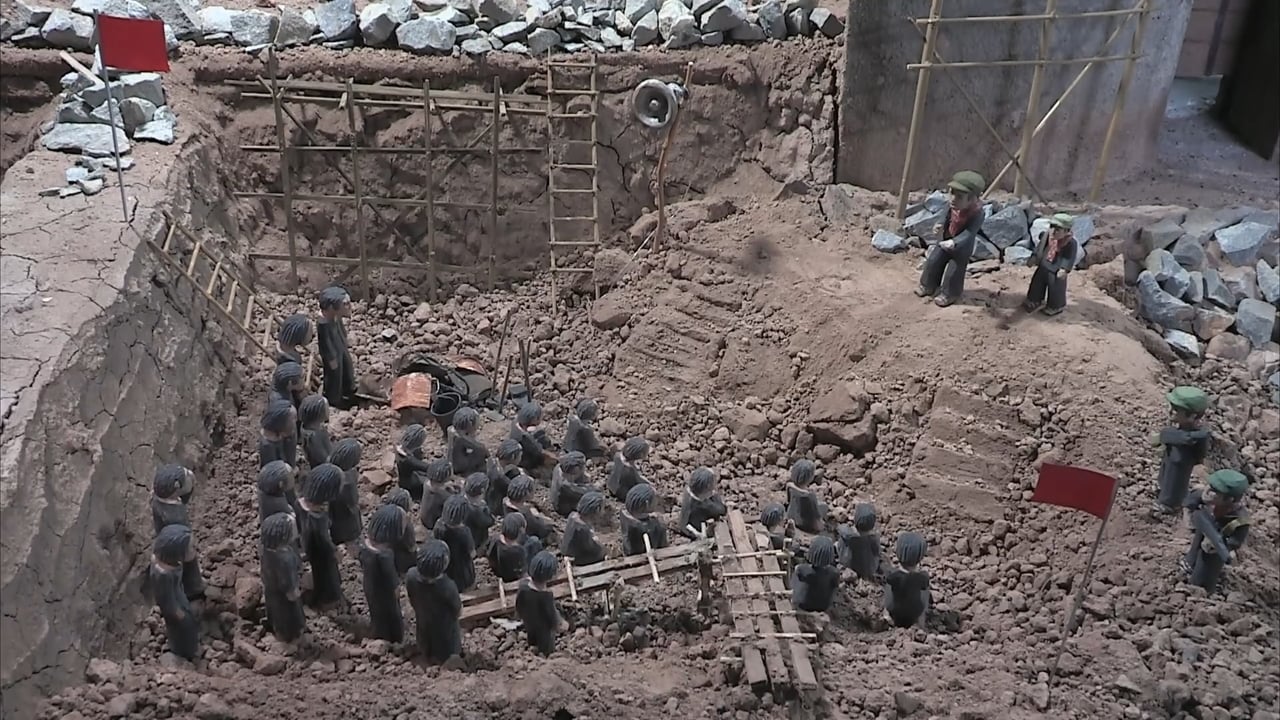Platicsco
Good story, Not enough for a whole film
Dorathen
Better Late Then Never
Skyler
Great movie. Not sure what people expected but I found it highly entertaining.
Darin
One of the film's great tricks is that, for a time, you think it will go down a rabbit hole of unrealistic glorification.
sol-
"A picture can be stolen - a thought cannot" states the narrator of this documentary about the atrocities committed by Khmer Rouge in late 1970s Cambodia. While not actually narrated by him for reasons unknown, the script for the film is written by director Rithy Panh, a survivor of the atrocities, in an usual touch, Panh uses clay figures to depict incidents he experienced but for which no archive footage exists. Going back to that earlier quote, the film stands up as a testament of the human mind to recall personal horrors in great detail as one's thoughts can never be stolen. The clay figures are remarkably detailed and especially effective in a moment when Panh recalls drinking muddied water while watched by seemingly stunned local herds. Unique as the film may be though, it outstays its welcome long before it is over. The narration is extremely repetitive and as the film keeps focusing on emotions that its director personally felt, it crosses the border into maudlin territory while ultimately becoming less a document of the times and more the faded memories of a single man. The film is very deliberately paced too so one really needs to be in the right mood to appreciate it. The clay work is, however, never less than remarkable and as the film takes time to focus on Panh also creating all the models, sculpting then painting them, it is hard not to admire the care and consideration put into them. This was clearly a very personal film for Panh and the fact that the film makes one want to read up more about the Khmer Rouge horrors certainly says something.
MartinHafer
"The Missing Picture" is a very unusual documentary and was nominated for the Oscar for Best Foreign Language Film. It's so unusual because filmmaker Rithy Panh tells the story both with archival footage AND little figurines that he created for the film! Perhaps this was a way to make the horror of the Khmer Rouge easier for the audience to watch, as an hour and a half of footage of atrocities would be just about unwatchable considering how brutal this regime was. And, since you don't see live actors in the film-- just narration and film clips, seeing it in its original French language or the optional English language form is a roughly identical experience, or at least I assume so.While I enjoyed how unique this film was and figure its uniqueness probably led to its Oscar nomination, I must confess that the narration made an exciting story very, very slow and a bit tedious. Perhaps the French language version is better, I don't know. All I know is that a film like "The Killing Fields" or a regular documentary about the subject is something I could have enjoyed or at least stuck with better.
mccarthyedits
I watched The Missing Picture (2013, dir. Rithy Panh) last night and thought how clay figures can't compensate for missing pictures. I thought I was going to enjoy the film when it opened with poetic narration and a mesmerizing piece of archival film depicting a Cambodian dancer and the years prior to the Pol Pot takeover. However, as the film started relying more on static clay figures and less on archival footage I began to lose interest. Panh's story is remarkable and beautifully told, but the clay figures, although quite expressive in their design and arrangement, reminded more of an award winning high school diorama than the visuals for an award winning documentary film.
Baceseras
The Khmer Rouge tried to leave no traces of the Cambodian genocide (1975-79). It could be a crime for anyone outside the Party to have pencil and paper, not to mention camera or tape recorder. Scarcely any images got out.Rithy Panh was thirteen when his family was rounded up. along with the other residents of Phnom Penh, and sent to "re-education" camps and then five years of starvation and rural labor. Now as a survivor looking back at those years, he uses simple clay figures to represent the people who died unrecorded. He juxtaposes them with scraps of propaganda films and other footage, and with manufactured landscapes, while narrating a major 20th century horror story that's also a personal and national tragedy.The film takes all kinds of aesthetic risks: the images are complexly beautiful, but they dare to seem simplistic or naïve, or to skirt "bad taste." The simplicity is more than justified though, as The Missing Picture does recapture a lost time, the artistic triumph inseparable from the human triumph.

